I don’t often feature vines for Iowa wildflower Wednesday, because I can rarely identify them. This vine is so abundant near the Windsor Heights bike trail that I was motivated to learn more. At first I thought it was Moonseed (Menispermum canadense), but the flowers didn’t match, and the vines are blooming now, rather than in late spring/early summer like moonseed.
Naturalist and photographer Leland Searles confirmed that this vine is Bur cucumber (Sicyos angulatus), “central Iowa’s only native cucurbit.” Sometimes called Star cucumber or one-seed burr cucumber, this species is native to most of North America east of the Rocky Mountains. The vine “produces both staminate (male) and pistillate (female) flowers on the same plant.” I enclose below pictures of both kinds of flowers, blooming on vines large and small.
This post is also a mid-week open thread: all topics welcome.
As usual, the Illinois Wildflowers and Minnesota Wildflowers websites are good resources for botanically accurate descriptions of bur cucumber foliage and flowers. The Minnesota site explains the differences between male and female flowers as follows:
Individual flowers have 5 greenish-white pointed petals, tinged green at the base, with pale green veins along the length of the petal. Male flowers are about ½ inch across, stalked, in a raceme of 3 to 10 flowers clustered at the end of a long, hairy stem attached opposite a leaf. A column of pale yellow-tipped stamens protrudes from the center.
The female flowers are smaller and more bell-shaped than the male flowers, essentially stalkless, in a round cluster at the tip of a short stalk that elongates up to 3 inches in fruit. The center column is tipped with 3 stigmas.
Closer views of male flowers:
Closer view of female flowers:
According to the Illinois Wildflowers website, bur cucumber is typically found in the following habitats: “openings in floodplain forests, moist meadows in floodplain areas, thickets, banks of ditches and rivers, and edges of fields. Moist disturbed areas are preferred.” Various bees, wasps, and flies feed on the nectar, while other insects eat the foliage. Mammals do not eat the foliage or fruit of these vines.
A single bur cucumber vine may wind its way through shrubs or trees:
Or a mass of vines can look like a large shrub:
Here bur cucumber is intertwined with yellow jewelweed on the left and white snakeroot on the right:
I took these last two pictures in an area where huge stands of jewelweed and bur cucumber used to grow along the Windsor Heights trail. During a trail-widening project last fall, heavy construction equipment tore the ground up, leaving nothing but mud. This summer, I was excited to see the jewelweed and bur cucumber re-establishing themselves. Wildflowers may look delicate, but some of these native plants are incredibly tough.
These bur cucumbers and jewelweeds are barely a foot tall now, but I hope they will be back to their previous size within a few years:
OCTOBER 2016 UPDATE: Here’s a bur cucumber vine later in the fall, with fruit as well as flowers.

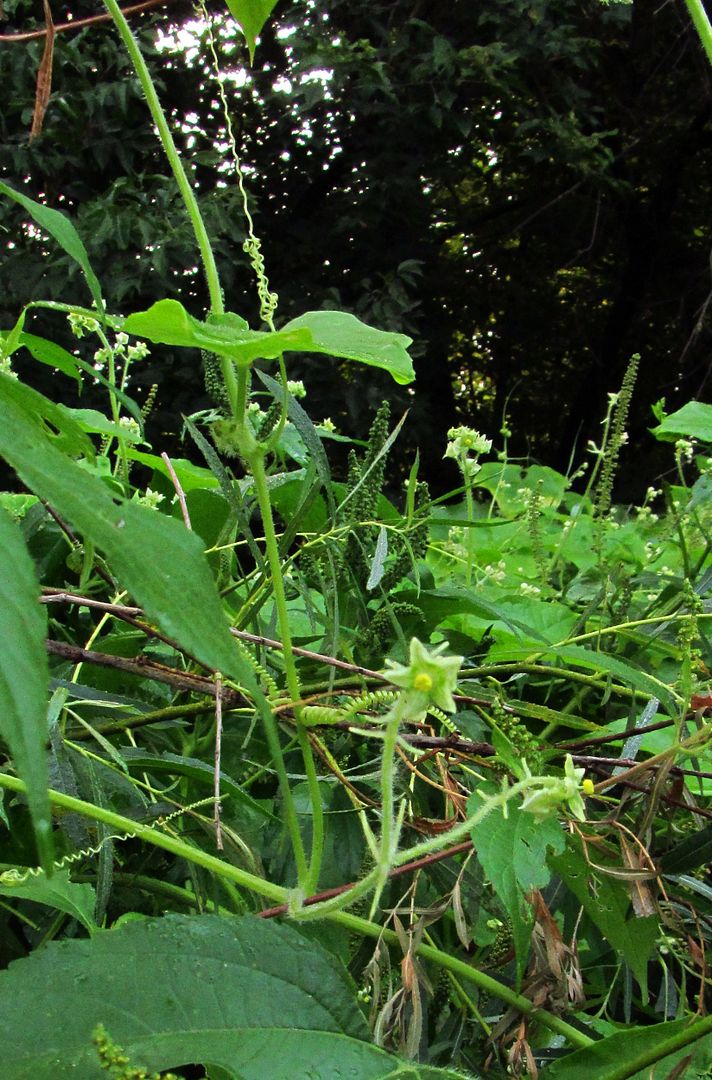
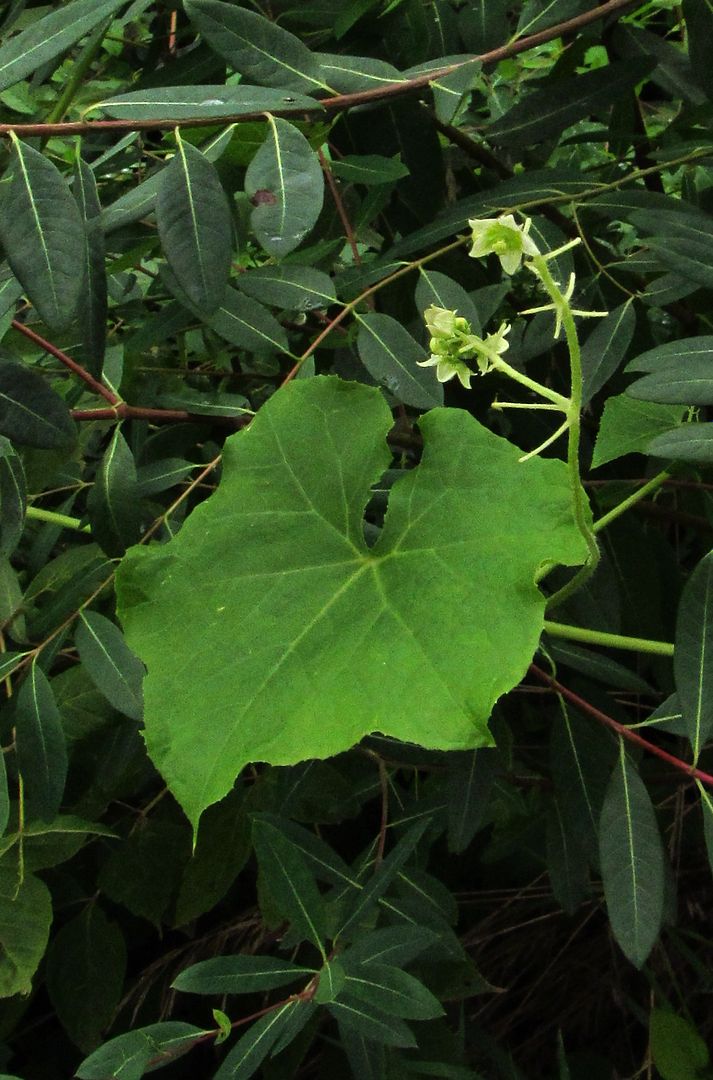


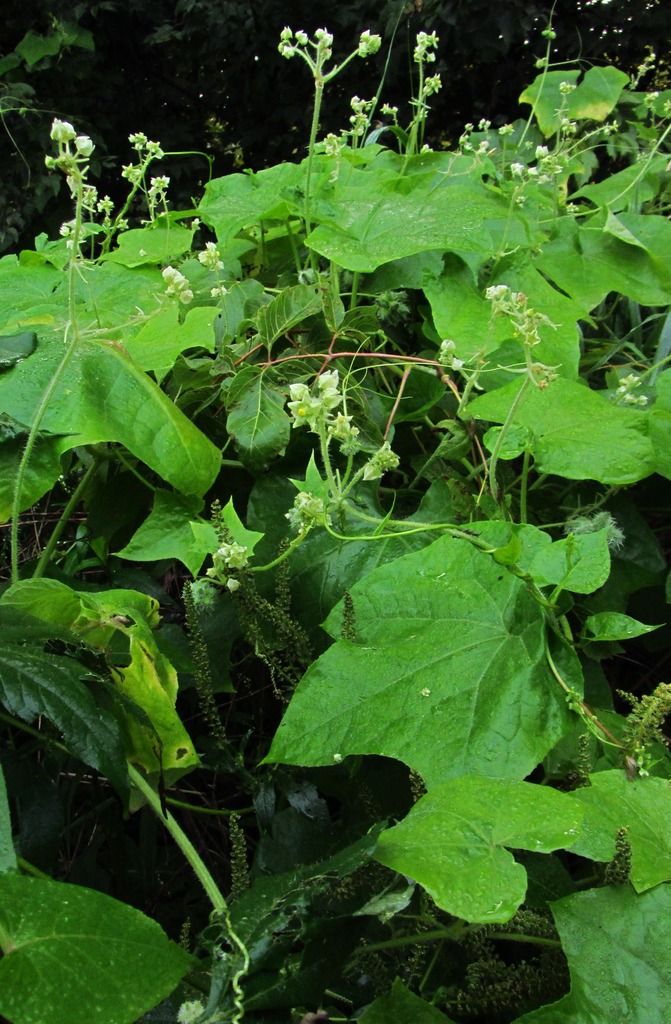
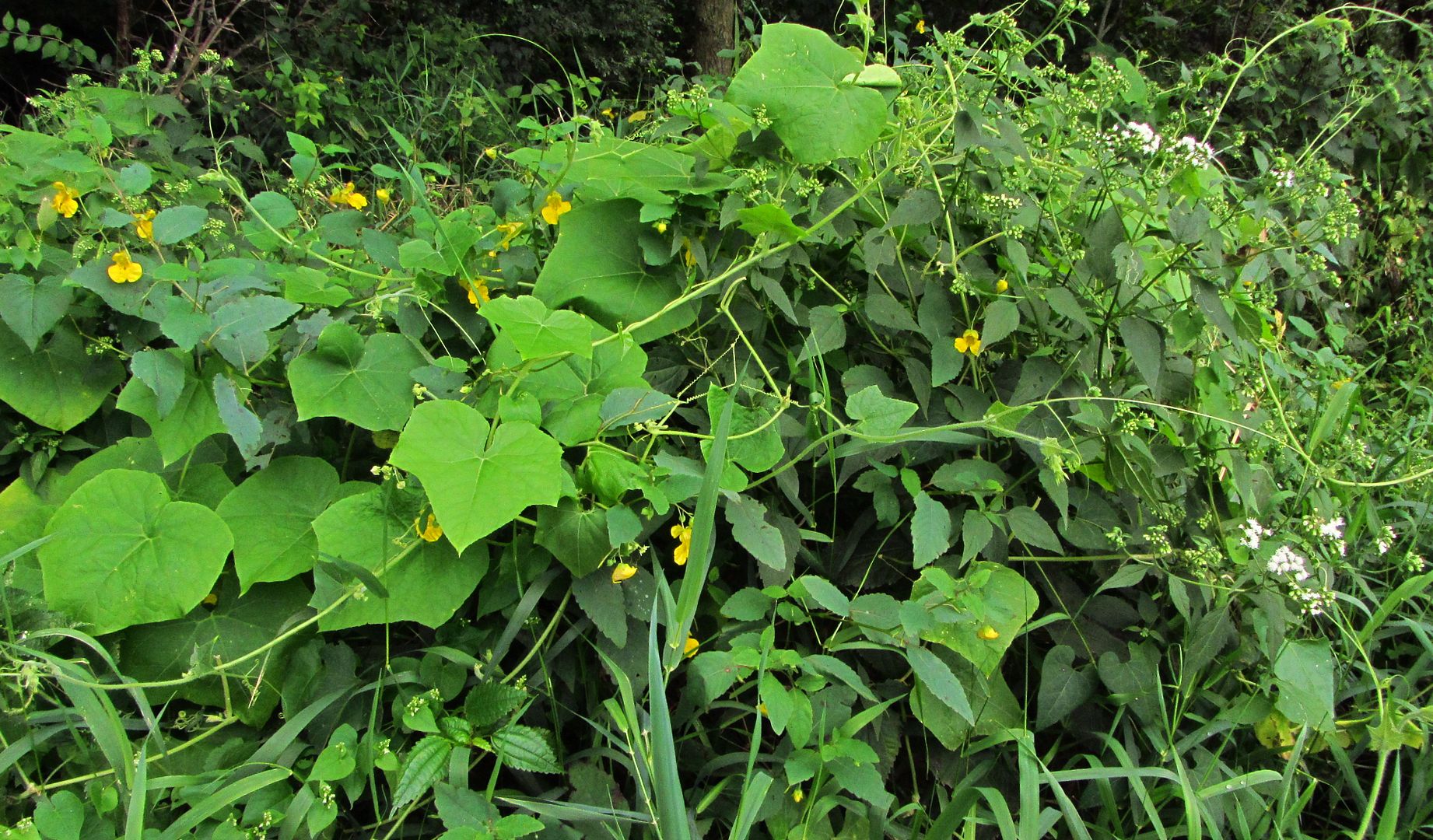

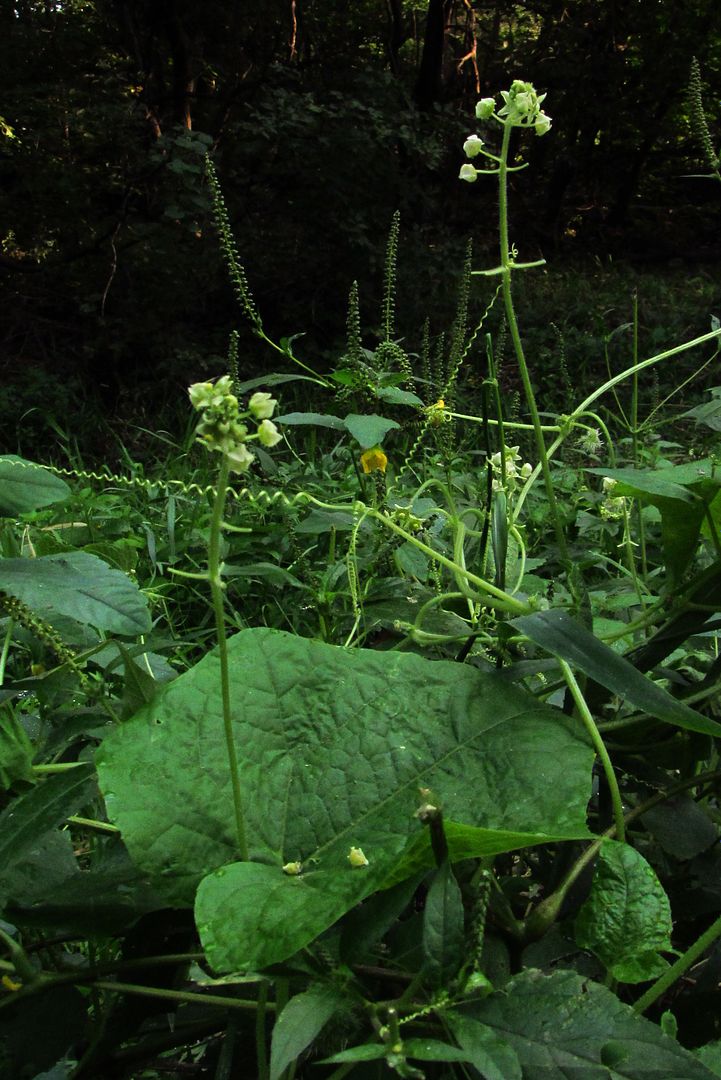

1 Comment
I really like beautiful Star Cucumber...
…and I am even fonder of Wild Cucumber, Echinocystis lobata. Some years there is a lot of it on our property, and other years, disease seems to kill it all off before the fruits can form. Last year was a bad year for it, so I’m hoping this will be a good year. Last year, on the other hand, seemed to be a good year for Star Cucumber, and there were large beautiful tangles of vines in our area.
PrairieFan Tue 25 Apr 1:50 AM